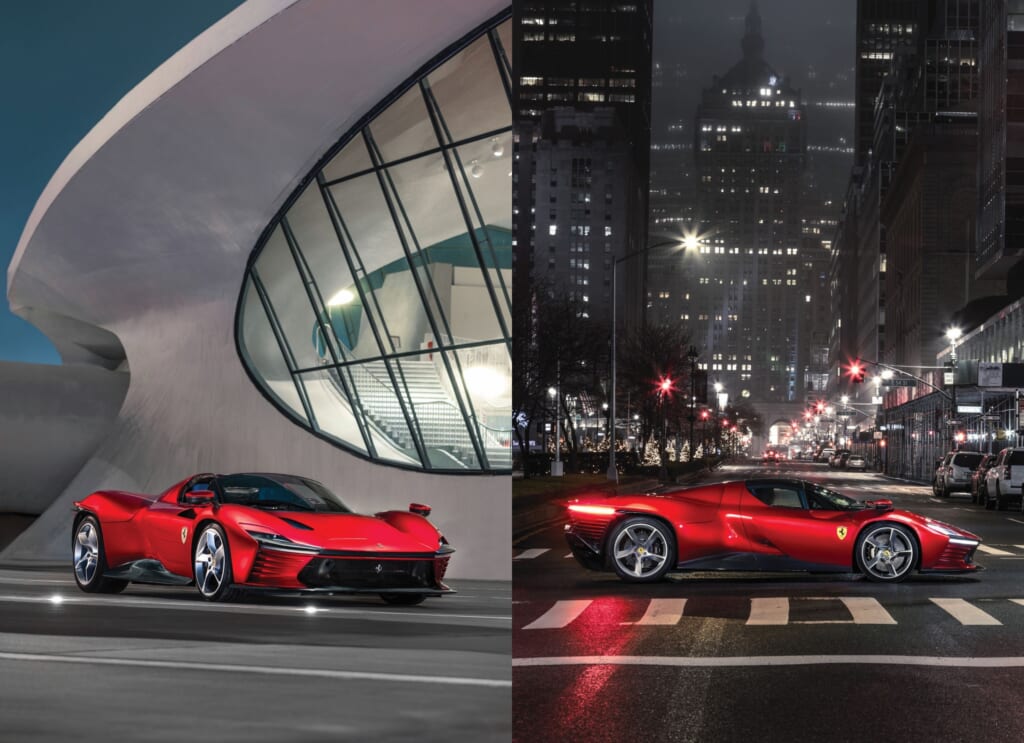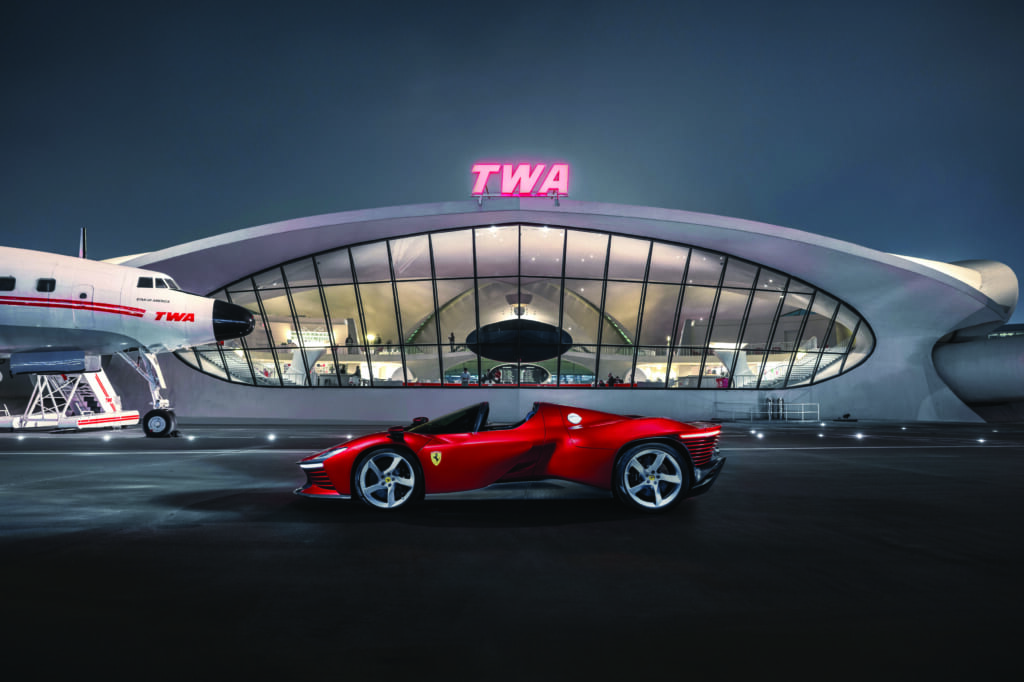Ferrari’s 75th Anniversary: Meet The Daytona SP3 Halo Hypercar
Ferrari’s Senior VP of Design explains the unbridled beauty and sensuality behind the design of today’s preeminent Prancing Horse.

In celebration of Ferrari’s Diamond Anniversary, Maxim first rounded up the 12 greatest Prancing Horses of all time. The culmination of these Rossa Corsa festivities will feature Piero Ferrari, Enzo’s only living son and the current Vice Chairman and ambassador of Ferrari, in his first and only interview with an American magazine. Before talking with Piero, Maxim sat down with Ferrari Senior Vice President of Design Flavio Manzoni to discuss the marque’s newest halo car.
“While the Monza SP1 reprises the barchetta concept, which is essentially a single-seater body with no roof, the Daytona SP3 arose from the idea of developing an equally as strong design product,” explains Flavio Manzoni. The inspiration Ferrari’s Chief Design Officer refers to being of course the legendary 330 P4 sports-prototype racers that captured the entire podium at the 24 Hours of Daytona in 1967, cementing their place in Ferrari—and all motorsports—lore.
The latest in the Icona Series, the Daytona SP3 follows the twin Monzas (single-seater SP1 and SP2 coupé) revealed in 2018. Envisioned for very low volume, every car in the newly minted cost-bedamned Icona Series will be available only to Ferrari’s most elite— think loyal and wealthy—clientele. While the windshield-less Monzas were straight-lined and sleek, the newest SP3 features swooping wheel arches, a wraparound windshield, and knife-like rear strakes that perhaps nod to the 1980s Testarossa.

“I’m referring to the unbridled beauty, with such a voluptuous, sensual, formidable aesthetic, of racing cars from the past that were born to be used on the tracks,” Manzoni continues, highlighting the groundbreaking 330 P4’s almost salacious curves. “The shapes were the fruit of carefully conducted aerodynamics studies, but it was the creative genius of the great masters like [Sergio] Scaglietti and [Piero] Drogo, just to name a few, that made them works of art.”
While most of Ferrari’s vehicles adhere to the strict ‘form follows function’ mantra of modern design, all the Icona Series models promise a more design-centric approach, less handcuffed by exacting performance demands to create vehicles born to stun aesthetically—and the Daytona SP3 is no exception. The slim-waisted hypercar features a massive V12 mounted behind the driver, its monocoque tub and striking exterior panels all crafted from carbon fiber.
While the tweaked 6.5-liter naturally-aspirated lump features 10 more horses (829 hp) than its 812 Competizione donor, the SP3 was envisioned more to turn heads than claim checkered flags; although you can bet it won’t have trouble accomplishing either.

You may thank both the Icona Series’ design-centric ethos and Manzoni’s own education. Earning a degree in architecture from the University of Florence bestowed the talented Italian with a more holistic, interdisciplinary vision: “It is a very different approach from that of the ‘car fanatic’ who makes cars their obsession,” he argues, suggesting the traditional automotive designer’s higher risk of being trapped by the more common shapes and motifs of car design.
“An interdisciplinary vision, on the other hand, lets you continuously explore other fields in order to draw inspiration from outside the automotive world. It’s serendipity: that illumination, spark or lightbulb moment that might come up in a field far away from your own interests, which brings significant results when applied in a different field.”
The Daytona SP3 was recently named the Most Beautiful Supercar of the Year at the Festival Automobile International de Paris, and earning the prestigious Red Dot Best of the Best design award, underscoring Manzoni’s beliefs. After joining the Prancing Horse brain trust and launching the Ferrari Style Centre in 2010, the designer’s input and influence has only grown in the past decade—the success of the Icona Series unicorns clearly swelling his clout in the halls of Maranello and beyond.
“This is what is most striking to us about the Icona segment: the ability to achieve the effect of a work of art in motion, given that we designers have a bit more freedom with these types of vehicles,” he elaborates. “I believe the greater planning freedoms granted for these types of vehicles attest to the esteem held for the work of Ferrari’s Style Centre: the aesthetic contribution achieved through this type of approach is extremely high.”
